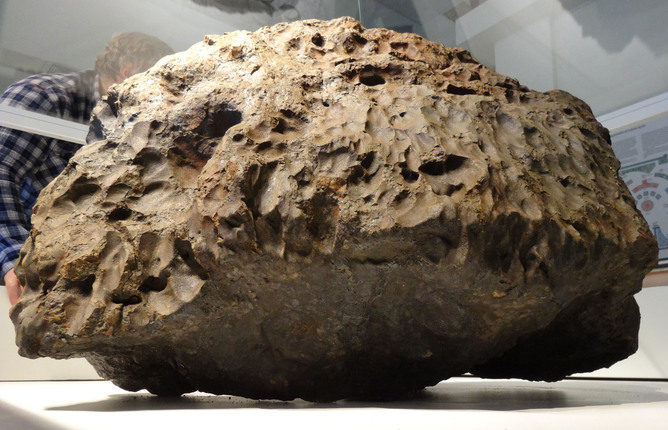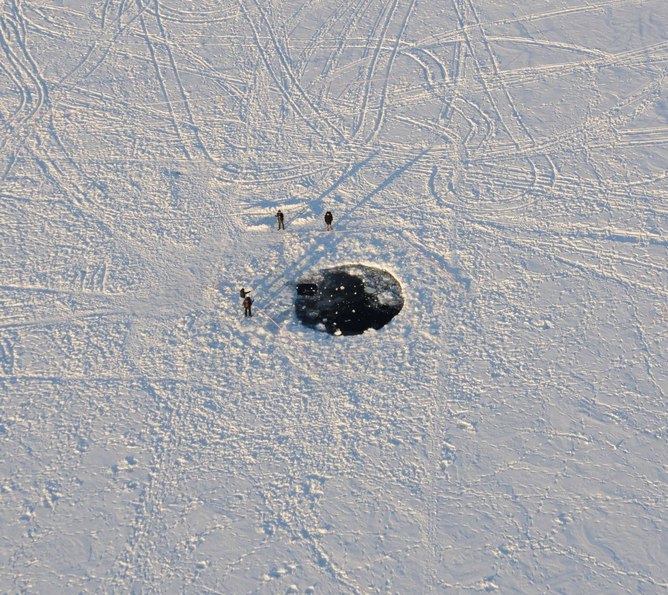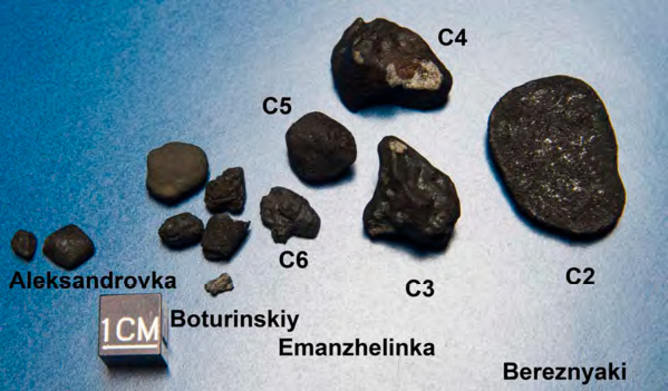
Chelyabinsk Meteor Explosion a 'Wake-up Call', Scientists Warn (Op-Ed)

This article was originally published at The Conversation. The publication contributed the article to LiveScience's Expert Voices: Op-Ed & Insights.
Three studies have revealed details of the meteor that exploded above Russian city, Chelyabinsk, in February this year.
Their findings, published today in a pair of papers in Nature and one in Science, provide information about the meteor’s origin, trajectory, power and damage by the airburst (the shock wave that travelled through the air from the explosion).
These findings may help to refine theoretical models about the likely frequency of such events, the potential damage they could cause and hazard mitigation strategies needed for planetary protection.
Trajectory, structure and origin
In the first study, led by Jiri Borovicka from the Astronomical Institute of the Academy of Sciences of the Czech Republic, 15 videos from eyewitnesses were analysed, most of which were filmed on smartphones and posted to YouTube.
Dr Borovicka explained that the videos were chosen based on the angles they were filmed and then calibrated for clarity with the help of an engineer.
After the location of each video was tracked down, the sites were photographed during the night.
Using the positions of the stars from the night-time shots, the authors determined the position of the superbolide (extremely bright meteor).
“I am stunned by the amount of detail obtained from analysing smartphone footage,” said Alan Duffy, a theoretical astrophysicist and cosmologist with the University of Melbourne.

“It demonstrates the ingenuity with which the researchers used to tease out information.”
By first reconstructing the path the asteroid took as it entered the Earth’s atmosphere, and then modelling thousands of possible trajectories, the authors determined that the origin of this superbolide likely belonged to the Asteroid Belt that sits between the orbits of Mars and Jupiter.
They also found that the Chelyabinsk asteroid shares a very similar trajectory with the 2.2km-diameter near-Earth asteroid 860389 (also known as 1999 NC43) that had once orbited close to Earth.
This makes it likely that both asteroids once belonged to the same object, with the larger asteroid being the parent of the Chelyabinsk superbolide.
Finally, using the recorded footage of the fragmentation of the superbolide, along with the audio records of the sonic booms that followed, the researchers were able to provide estimates for the likely composition, structural strength and size of the asteroid.
Their best guess is that the object was in fact a fractured stone, in agreement with the collision origin model, roughly measuring 19 metres across.
According to Dr Duffy, these findings are a wake-up call – that a large object need not be on a direct collision course with Earth to be a threat to us.
For example, the asteroid 86039, although not likely to hit us, could still pose a danger by sending its fragments on a path towards Earth.
Power of the airburst

In a second study led by Peter Brown, a professor of physics and astronomy at the University of Western Ontario, the authors observed recordings from 400 amateur videos and multiple instruments (such as infrasound, seismic and US government sensors) all over Earth.
According to Dr Duffy, such listening posts are usually used to monitor nuclear explosions.
But, because the energy from the Chelyabinsk airburst was so large, it caused a “ringing” in the Earth’s surface that got picked up by seismic stations as far as 4,000 km away.
“Never before have we been able to study a meteor event of this magnitude at this level of detail. As far as I know, we have never studied an asteroid impact before, during and after the event,” said Simon O'Toole, a research astronomer with the Australian Astronomical Observatory.
“This is what I call ‘forensic astronomy’ – to take in all the evidence about an event and infer what actually happened and why.”
Collecting evidence of the ground damage caused by the airburst, which shattered thousands of windows, the authors tested their models of the resultant shockwave from the explosion.
They estimated that the airburst was as powerful as 530 kilotons of TNT exploding, roughly the strength of 30 Hiroshima bombs, and about 30 times brighter than the sun at its peak brightness.
Lastly, the authors used worldwide datasets from the past 20 years to show that existing models used to estimate airburst damage did not match the observations from the Chelyabinsk asteroid.
They predicted that the number of global impacts from other Chelyabinsk-sized objects per year was underestimated by a factor of ten.
Lucyna Kedziora-Chudczer, an astrophysics researcher with the University of New South Wales, explained that the underestimation was a result of using methods like telescopic observations of asteroids, models based on the number of lunar craters and dedicated searches for Near-Earth Objects that could be potentially dangerous.
According to Margaret Campbell-Brown, associate professor at University of Western Ontario and co-author of the study: “The Chelyabinsk airburst didn’t cause as much damage from the energy released as we had expected. This is because the energy was laid down in a long trail and so the damage was spread over a longer path.”
Dr Duffy believes that these findings present both good and bad news.
“The good news is that the damage from ‘killer asteroids’ is significantly less than what the models estimate. The bad news is that the number of collisions of these Chelyabinsk-sized objects per year have been greatly underestimated,” he said.
“So even though each asteroid may do less damage individually, they are much more common.
“It is therefore vital that we invest in newer, more powerful telescopes so that the sky can be surveyed more carefully.”
Damage assessment

The authors of a third study, led by Olga Popova from the Russian Academy of Science, visited 50 villages in outlying Chelyabinsk in the weeks following the airburst.
They counted the homes damaged by meteor fragments and the number of people injured by the shockwave and radiation, which included UV and thermal burns as well as retinal damage.
“This data is significant because it shows that, even though the asteroid fell to Earth already severely weakened and its smaller fragments limited the damage on the ground, people still suffered burns from the UV glow of the very hot fireball,” said Dr Duffy.
The findings also included an exhaustive analysis of the mineralogy of the recovered fragments from the Chelyabinsk meteor.
The mineralogy reports suggest that the Chelyabinsk object was a relatively rare LL5-type meteorite, which is a low-iron, low-metal, stony chrondrite material made of silicates and other minerals compressed together, said Dr Kedziora-Chudczer.
Using robust Uranium-Lead, the authors determined the asteroid was about 4.4 billion years old.
But what is unusual is that the surface of the Chelyabinsk meteor appears to have been exposed to cosmic rays for only one million years, which is insufficient time for the object to have split from its larger parent.
Based on this, the authors believe that the culprit is likely Earth itself.
It is possible that the parent asteroid, thought to be billions of years old and originally from the Asteroid Belt, came close to Earth and got pulled apart by Earth’s gravity, or from a collision with another asteroid.
The fragments then fell towards Earth over the next million years.
Dr Duffy warns that with the larger remains of the parent object still out there, we are at risk of possibly being hit even though there is no evidence to suggest that another fragment is on its way to us.
If, like in Chelyabinsk’s case, the asteroid is small and faint and coming at us from the direction of the sun, it would be next to impossible for a ground-based survey to see such an asteroid before the impact, explained Dr Campbell-Brown.
Dr Kedziora-Chudczer agreed, saying: “That is why it is important to learn how often such bolides can enter the area that may send them on the collision course with Earth.”
This article was originally published at The Conversation. Read the original article. The views expressed are those of the author and do not necessarily reflect the views of the publisher. This version of the article was originally published on LiveScience.
Sign up for the Live Science daily newsletter now
Get the world’s most fascinating discoveries delivered straight to your inbox.










